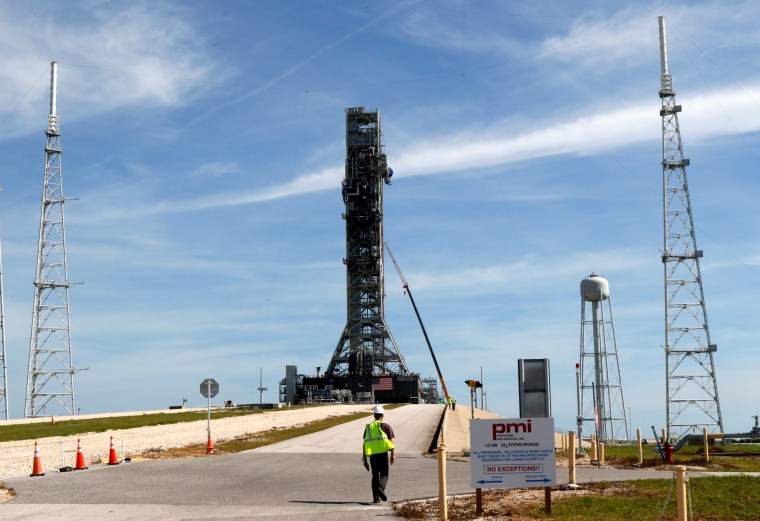As Hurricane Dorian makes its way to Florida, NASA’s Kennedy Space Center in Cape Canaveral is preparing for what could be the first time it is directly hit by a hurricane.
The Kennedy Space Center, which lies on the Eastern coast of Florida about 50 miles from Orlando, expects to find itself in Dorian’s path. The hurricane, after just missing Puerto Rico, is now predicted to reach Florida as a Category 4 storm Monday morning with winds that could reach a maximum of 130 mph.
NASA employees are working to protect the 400-foot Launch Pad 39B at risk of hurricane damage. Officials are moving the crawler-transporter, the massive tracked vehicles that carry spacecrafts, to the mobile launch pad, in case they need to bring the pad back into the Vehicle Assembly Building. The crawler-transporter moves at about 1 mph, NASA says, so they are moving it now in preparation for Monday’s storm, hoping to get ahead of the expected weather event.
“It’s a precautionary move at this point,” Derrol Nail, a communications person with NASA, said in a video about hurricane preparations. The center says it will close Saturday if the storm continues on its current forecast track, with a "Ride Out Team" who will stay behind to monitor facilities and the storm's effect.
“Our process right now is to protect our assets and infrastructure from potential damage,” another NASA representative said in a video message Thursday.
Moving the launch pad into the more than 500-foot building is possible, but will only be done if necessary, NASA told NBC News in an email. But if it is moved, the organization expects the launch pad to be able to safely wait out the storm inside the building.
NASA’s preparations come after Tyndall Air Force Base on the Florida Panhandle faced devastating damage in the wake of Hurricane Michael last October. While the more than $300 million-a-piece F-22 stealth fighters survived, repairs were needed.
While the center has never been directly hit by a hurricane, sand dunes protecting its infrastructure were destroyed after Hurricane Sandy in 2012, and NASA conducted an expensive six-month restoration project that it completed in 2014. The Vehicle Assembly Building has faced significant hurricane damage before, losing many of its aluminum panels and sustaining roof damage during Hurricane Frances in 2004.
The National Hurricane Center said Thursday it is still too early to tell exactly where Dorian will hit the hardest. NASA is closely monitoring the storm, and is making sure it is taking the necessary precautions to limit damage.

